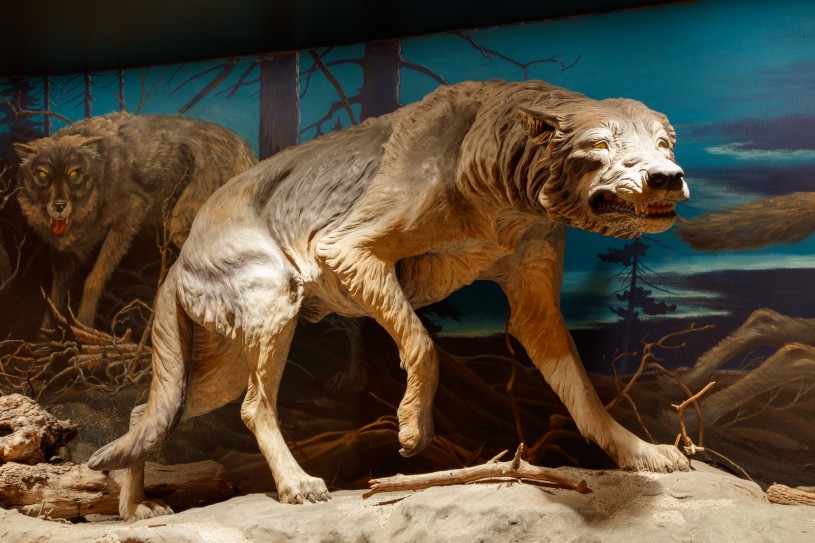Ice Age saber-toothed cats and dire wolves experienced a high incidence of bone disease in their joints, according to a study published July 12, 2023, in the open-access journal PLOS ONE by Hugo Schmökel of Evidensia Academy, Sweden, and colleagues.
"This study adds to the growing literature on Smilodon and dire wolf paleopathology, made possible by the unparalleled large sample sizes at the La Brea Tar Pits & Museum," says Alf Museum Augustyn Family Curator of Paleontology and La Brea Tar Pits Research Associate, study co-author Dr. Mairin Balisi. "This collaboration between paleontologists and veterinarians confirms that these animals, though they were large predators that lived through tough times and are now extinct, shared common ailments with the cats and dogs in our very homes today."
Osteochondrosis is a developmental bone disease known to affect the joints of vertebrates, including humans and various domesticated species. However, the disease is not documented thoroughly in wild species, and published cases are quite rare. In this study, Schmökel and colleagues identify signs of this disease in fossil limb bones of Ice Age saber-toothed cats (Smilodon fatalis) and dire wolves (Aenocyon dirus) from around 55,000 to 12,000 years ago.
Researchers examined over 1,000 limb bones of saber-toothed cats and over 500 limb bones of dire wolves from the Late Pleistocene La Brea Tar Pits, finding small defects in many bones consistent with a specific manifestation of bone disease called osteochondrosis dissecans (OCD). These defects were mainly seen in shoulder and knee joints, with an incidence as high as 7% of the examined bones, significantly higher than that observed in modern species.
This study is limited to isolated bones from a single fossil locality, so further study on other fossil sites might reveal patterns in the prevalence of this disease, and from there might shed light on aspects of these animals’ lives. It remains unclear, for example, whether these joint problems would have hindered the hunting abilities of these predators. Furthermore, OCD is commonly seen in modern domestic dogs which are highly inbred, so it’s possible that the high incidence of the disease in these fossil animals could be a sign of dwindling populations as these ancient species approached extinction.
About La Brea Tar Pits
The asphalt seeps at La Brea Tar Pits are the only consistently active and urban Ice Age excavation site in the world. This makes the site a unique window into active science—where fossils are discovered, prepared, researched, and displayed in one place. Outside, visitors can watch excavators unearth fossils of Ice Age plants and animals that were trapped and preserved in the seeps. Inside the Museum, scientists and volunteers clean, repair, and identify those fossils. The best specimens are displayed and available for research: from extraordinary saber-toothed cats, giant sloths, dire wolves, mammoths, and mastodons—to microfossils of small animals and plants. These collections constitute an unparalleled resource for understanding environmental change in Los Angeles, and the planet, during the last 50,000 years of Earth’s history.
About the Raymond M. Alf Museum of Paleontology
Founded in 1936, the Raymond M. Alf Museum of Paleontology is the only nationally accredited museum located exclusively within a secondary school campus, The Webb Schools. We are the only museum in the world that involves high school students in all aspects of its operations, including scientific research. The museum houses nearly 200,000 fossils, 95% of which were collected by museum staff, high school students, and volunteers. The collection focuses on the paleontology of southern California and the western United States. Located in Claremont, southern California—bordering Los Angeles and San Bernardino Counties—we annually serve over 20,000 visitors through NGSS-aligned educational tours, innovative offsite educational programming, and live-streamed virtual content. Visit www.alfmuseum.org for more information.
MEDIA CONTACTS
For interviews and additional imagery, please contact Amy Hood, ahood@nhm.org

